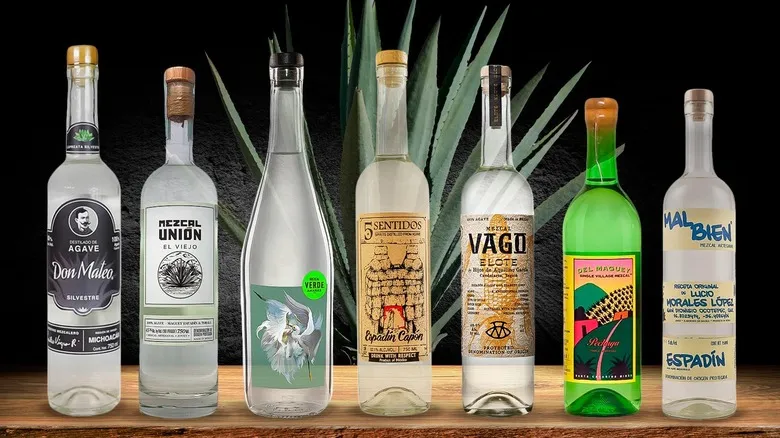Cinco Sentidos Espadín Capón

Cinco Sentidos showcases five artisanal mezcal producers from distinct regions, each master distiller employing unique methods that impart their creations with exceptional flavors. If you're unfamiliar with Cinco Sentidos or mezcal in general, Jason Parr, a bartender and mezcal connoisseur at The Mothership, suggests trying the Espadín Capón crafted by mezcalero Alberto Martinez in Santa Catarina Albarradas, Oaxaca.
Espadín is one of the most prevalent agave varieties used in mezcal production due to its resilience and ability to thrive in diverse environments. Its high sugar content makes it ideal for spirit production. While Cinco Sentidos Espadín Capón is made from espadín agave, it differentiates itself from other espadín mezcals in several notable ways.
Parr explained to Chowhound, "It's produced using the capón method, where the plant's stalk is trimmed before harvest, allowing sugars to be redirected back into the plant. This results in a rich, fruity profile." Additionally, Martinez ferments the agave juice with bark from the tepehuaje tree and distills the mezcal twice in clay pots, which contributes herbal and mineral characteristics to the spirit. Overall, it offers a clean taste with sweet, slightly savory, and earthy notes.
Mezcal Del Maguey Pechuga
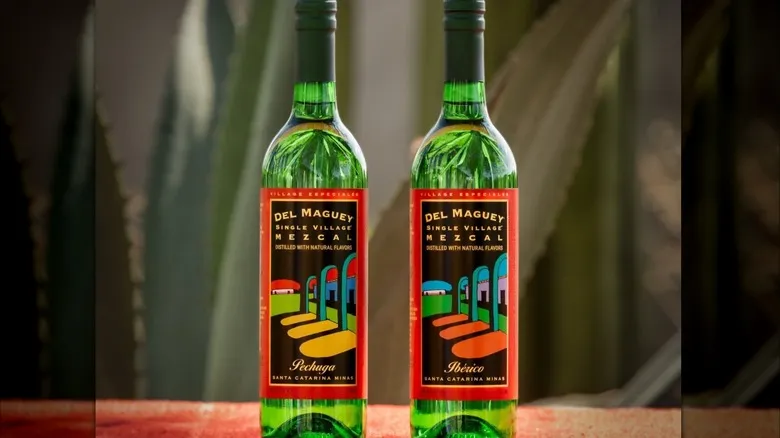
If you're in search of a mezcal with a distinctive flavor, you might want to try a pechuga mezcal. Like other mezcals, it is produced by roasting agave piñas, followed by the extraction, fermentation, and distillation of the juice. However, after the second distillation, additional ingredients are introduced to the still, including meat. Typically, this is chicken or turkey breast (pechuga), but it can also be deer, rabbit, or lamb. As the meat hangs in the still, the steam cooks it, allowing the juices to infuse into the mezcal. Other flavor enhancers may include fruits, grains, and spices.
Bartender Vincent Mina from Tequila Barrel, a cocktail lounge specializing in tequila and mezcal at Sky River Casino, shared that one of his favorite lesser-known mezcals is the Del Maguey Pechuga Mezcal. This mezcal features Minero mezcal (espadín mezcal from Santa Catarina Minas, Oaxaca) infused with a whole chicken breast. Mina explained, "It’s akin to traditional Hispanic or Hawaiian-style meat smoking, where the meat is buried underground and covered with leaves, resulting in a unique smoky flavor that also captures subtle notes from the various ingredients used." The outcome is a truly unique mezcal that presents hints of fruit, charred wood, and meat.
Mezcal Vago Elote

Mezcal Vago is a company that showcases small-scale mezcal producers from various regions in Oaxaca. Temo and Mateo Garcia, the sons of the late master mezcalero Aquilino García—one of Mezcal Vago's founders—now craft distinctive mezcals under the label Hijos de Aquilino. Among their most intriguing offerings is Mezcal Vago Elote, an espadín mezcal infused with heirloom corn. It's common for "celebration" mezcals to incorporate additional ingredients during the final distillation, and many consider Mezcal Vago Elote to be a celebration in itself.
Nikki Bonkowski, the VinoVoss AI sommelier ambassador and master mixologist, shared with Chowhound that the inclusion of toasted corn in the second distillation enhances the typical smoky notes of mezcal with a touch of sweetness. "Not just any sweetness—think savory sweet, like toasted marshmallows or caramelized sugar," she explained. "It’s known for its long-lasting finish that lingers on your palate, making it perfect for slow sipping." To fully appreciate the roasted corn and agave flavors, it's best to enjoy this mezcal neat in a cup or glass rather than mixing it into cocktails.
Divino Maguey Tamarindo
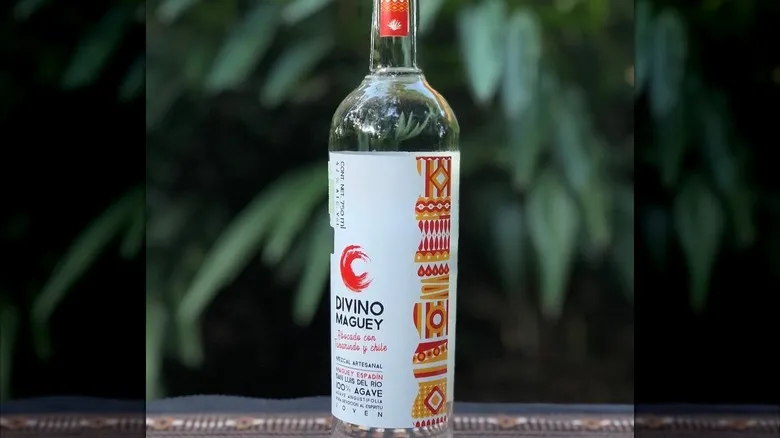
One of the inquiries we posed to the experts was about the mezcals they prefer when seeking something beyond the ordinary. Joshua Becker, the general manager at San Diego's renowned craft cocktail venue, The Lion's Share, shared that his favorite unconventional mezcal is Divino Maguey Tamarindo. He described it as "incredibly distinctive and easy to enjoy."
While exploring mezcals, you may encounter the phrase "abocado con" on certain bottles. This indicates that the mezcal has been infused with additional ingredients post-distillation. In the case of Divino Maguey Tamarindo, espadín mezcal is enhanced with flavors from tamarind and chilies. The tamarind adds a sweet profile that harmonizes wonderfully with the smoky essence of the roasted agave and the heat from the chilies.
This mezcal is perfect for sipping neat or incorporating into Mexican-inspired cocktails. For instance, you can add a smoky twist to your margaritas by replacing tequila with this flavorful mezcal. Alternatively, you can create mezcalitas by mixing mezcal with orange juice, lime juice, and orange liqueur, served in a glass rimmed with spicy Tajín seasoning or sal de gusano (a blend of ground red maguey worms and salt).
Mezcal Vago Tobalá En Barro
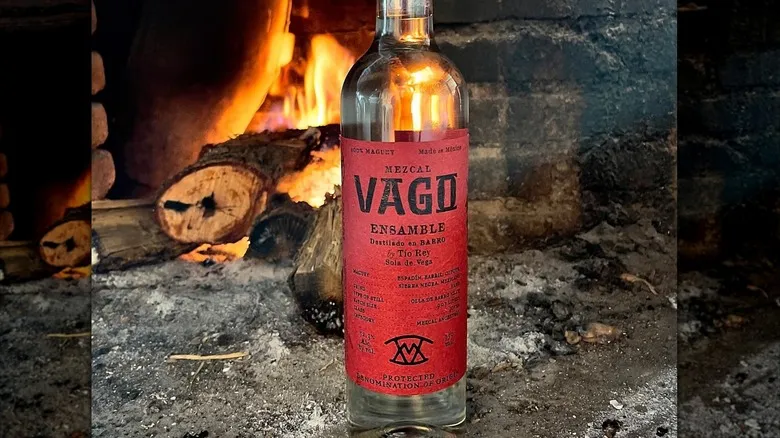
Produced by Mezcal Vago, maestro mezcalero Tío Rey crafts mezcal in the Sola de Vega region of Oaxaca, which boasts a diverse array of agave varieties, including espadín, coyote, and tobalá. Tío Rey employs traditional methods to create his remarkable Ensamble blends. The agave piñas are roasted in earthen pits, hand-mashed, and distilled in clay pots. An agave leaf captures the condensed mezcal and directs it into the collection vessel. Each Ensamble blend is made in limited batches and is never replicated, making them rare finds that are truly worth the pursuit.
Brett Anderson, the group food and beverage director for the LINE Austin, shared with Chowhound that one of his top mezcal picks is the Mezcal Vago Tobalá En Barro. This exceptional mezcal is crafted from mature tobalá agave, harvested when the plants are 17 or 18 years old. The sweetness of the tobalá and the use of ancestral techniques are prominently featured in this expression. "It has a bold, sweet, fruity aroma reminiscent of strawberry shortcake, with an incredibly pleasant mouthfeel and just a hint of funkiness," Anderson noted. If you happen to find a bottle, we highly recommend grabbing it while you can.
Mezcal Amarás Espadín
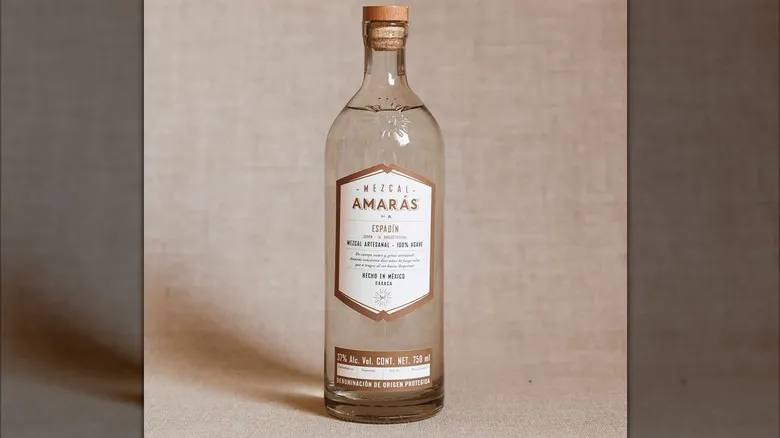
Since its inception in 2010, Mezcal Amarás has been crafting award-winning mezcals with a focus on sustainability. The company collaborates with skilled maestro mezcaleros from Oaxaca, Guerrero, and Durango, who utilize both wild and cultivated agave to produce a diverse range of mezcals. These expressions are highly sought after by mezcal enthusiasts, not only for their unique flavor profiles but also for the company's commitment to environmental responsibility and fair trade practices. For every agave plant harvested, Mezcal Amarás plants ten more, ensuring the preservation of mezcal-making traditions for future generations. Additionally, the company compensates its suppliers with 20% above market rates for raw materials and labor.
One of the standout offerings from Mezcal Amarás is the Espadín. This mezcal is crafted from eight-year-old espadín agave sourced from Oaxaca, which is cooked over oak wood and fermented in pine wood vats. The result is a smooth, easy-drinking mezcal that features subtle notes of wood, fruit, and spice. It serves as an excellent entry-level option, as it is not overly smoky and has a light mouthfeel. We have enjoyed it both neat and in cocktails, and can confidently say it excels in either form. If you're in search of a versatile mezcal that caters to a variety of palates, this is a fantastic choice.
Mezcal Unión El Viejo

If you're in the midst of curating a mezcal collection, James Beard award-winning chef Iliana de la Vega from El Naranjo Mexican restaurant in Austin, Texas, advises that it's essential to have not just one, but several exceptional bottles. She suggests, "It's always wise to have a selection from the same producer." One of her top recommendations is Mezcal Unión, a company that collaborates with farmers and producers in Oaxaca to craft artisanal mezcals. Currently, they offer two varieties: Mezcal Unión Uno and Mezcal Unión El Viejo.
While de la Vega appreciates both offerings from Mezcal Unión, she particularly suggests starting with El Viejo. This mezcal is a blend of espadín and tobalá agave, aged for six to eight years. The combination of these two agaves results in a unique texture and flavor profile that is smooth, sweet, and slightly spicy. It's a mellow mezcal with a hint of smokiness and notes of stone fruit, cinnamon, and orange peel. You can enjoy it neat to fully appreciate its pure flavors, mix it into a mezcalita, or use it in a smoky negroni on the rocks, substituting mezcal for gin.
Don Mateo Cupreata
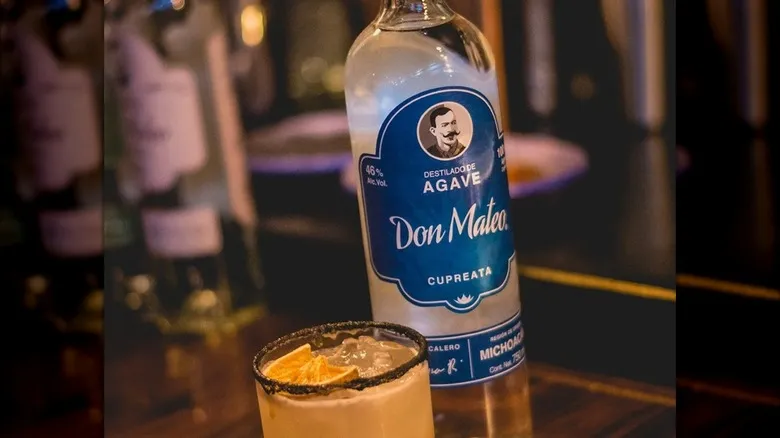
Who says that entry-level mezcals have to be ordinary? Tom Brander, the beverage manager at Wilder in Philadelphia, Pennsylvania, suggests Don Mateo Cupreata for its reasonable price, exceptional quality, and intriguing flavors. Crafted by maestro mezcalero Emilio Vieyra Rangel, this mezcal is produced from cupreata agave that is harvested after maturing for approximately six to nine years. The piñas are roasted in a volcanic stone oven buried in the ground, and the juice is fermented in oak tanks before being distilled twice. The result is a vibrant, herbaceous mezcal with notes of pine, citrus, and smoke.
What distinguishes Don Mateo Cupreata from other mezcals in its price category? For starters, it is produced in a pine forest in the mountains of Michoacán, imparting a distinctive flavor. Additionally, the agave itself is noteworthy. "This particular species, cupreata, was nearly extinct until the Vieyra family brought it back to life in their backyard," Brander explained. "It offers rich earthy tones with a touch of smokiness." At around $75 per bottle, it represents excellent value, especially considering the high-quality mezcal that surpasses many more widely available options.
Mal Bien White Tape 100% Espadin
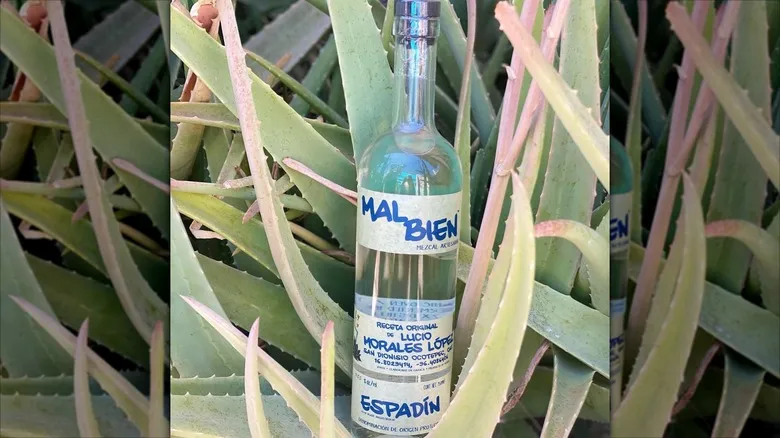
Mal Bien searches for mezcal producers who adhere to traditional methods to craft artisan mezcals that truly reflect their origins and the communities they represent. These expressions are made in Oaxaca, Guerrero, and Michoacán, with each bottle proudly displaying the name of the mezcalero responsible for the spirit. If you can only select one, Carlos Kennedy-Lopez, the head bartender at Lolita in Midtown, New York City, highly recommends the Mal Bien White Tape 100% Espadin by Oscar Morales Garcia.
You may notice the name on the bottle is Lucio Morales López, which belongs to Garcia's late father, who developed the original recipe. Garcia continues his father's legacy by cooking espadín agave in earth pits, crushing it with a stone tahona wheel, fermenting it in pine, and distilling it in copper pots. "It has a gentle smokiness from being cooked with encino (oak) and white pine, along with a subtle mesquite character," Kennedy-Lopez explained. "It's a crowd-pleaser — perfect for cocktails, and it also shines when enjoyed neat or on the rocks."
Gracios a Dios Tobalá
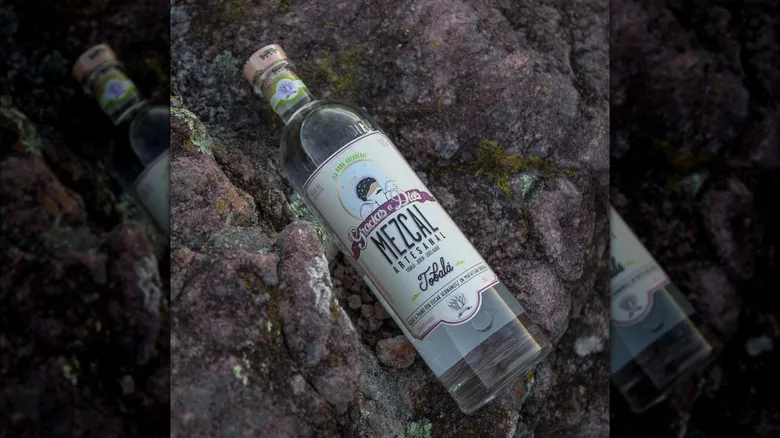
Gracios a Dios stands out for its collaboration with a single maestro mezcalero, Oscar Hernandez Santiago, a fourth-generation mezcalero who crafts his creations in his palenque located in Santiago Matatlan, in the heart of Oaxaca's central valley. He produces a diverse array of mezcals, including traditional espadín, fruit-infused varieties, and those made from rarer agave types such as tepeztate, cupreata, coyote, and cuishe.
Diana Novak, the national director of Craft Spirits Education at Palm Bay International, is knowledgeable about the offerings from Gracios a Dios. Her personal favorite is the Tobalá, which is made from wild tobalá agave that has been aged for a minimum of 13 years. The piñas are roasted in an earthen oven, fermented in pine wood vats, and distilled using copper stills. Novak describes it as having "delicate and soft smoke, hints of chocolate and dried fruits, along with rounded notes of tobacco and earth." She notes its refined texture and prolonged finish, making it enjoyable both neat and alongside various dishes. Novak particularly enjoys it with dessert, considering it a delightful way to conclude a meal.
5 Sentidos Pichomel
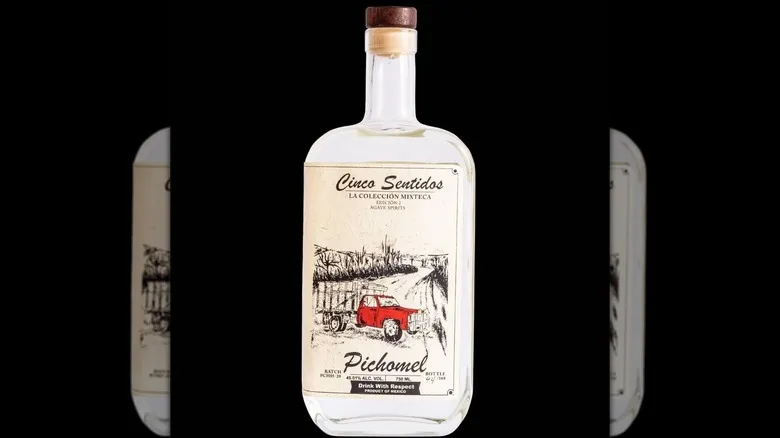
Are you in search of an exceptional mezcal to indulge in? Erika Fajilagot, the head bartender at Cat Bite Club in Singapore, suggests trying Cinco Sentidos Pichomel. This distinctive mezcal is crafted by the husband-and-wife duo Atelo Ramirez and Laura Arriaga, using rare pichomel agave sourced from Reyes Metzontla, Puebla. The agave piñas are roasted underground, then hand-mashed, with the juice fermented and distilled in clay pots. Due to its limited release, you won't find many bottles of Pichomel available. As Fajilagot puts it, "This mezcal is truly one-of-a-kind."
From the moment you open the bottle, you can appreciate the meticulous care and time invested in its creation. The aroma is herbaceous and floral, with notes of green pepper and bananas. A sip reveals a burst of flavors; Fajilagot describes the palate as a blend of dark fruit, spice, and cacao. She adds, "There's a gentle floral note, reminiscent of lavender or wildflowers, perfectly complemented by a subtle hint of smoke." The intricate flavors make this mezcal one to savor slowly, ideal for special occasions.
Mal Bien Alto
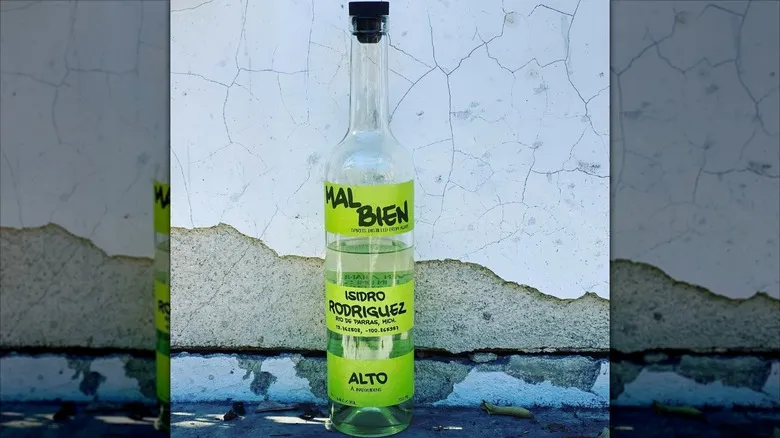
Many of the mezcals you encounter in the United States and even in Mexico originate from the state of Oaxaca. However, mezcal can be crafted in nine different Mexican states. The traditions and techniques of mezcal production differ from one state to another, allowing for some unique expressions that stand apart from the typical Oaxacan-style mezcals. If you're looking to try an intriguing mezcal that features fresh mineral notes alongside fruit and smoke, Erika Fajilagot suggests Mal Bien Alto.
Mezcalero Isidro Rodríguez Montoya hails from the small town of Río de Parras in Michoacán, where every resident has some connection to mezcal production. To create Mal Bien Alto, Montoya utilizes alto agave and employs artisanal methods that are evident in the final product. "It's open fermented in limestone with spring water, which imparts minerality and freshness, along with the natural sweetness derived from hand-mashing," Fajilagot explained. Montoya also incorporates pulque, the fermented sap of the agave plant, to expedite the fermentation process. This addition reduces some of the funk typically found in other mezcals, resulting in a light, clean-tasting spirit with hints of sour plum, watermelon, and green wood.
The Lost Explorer Espadín
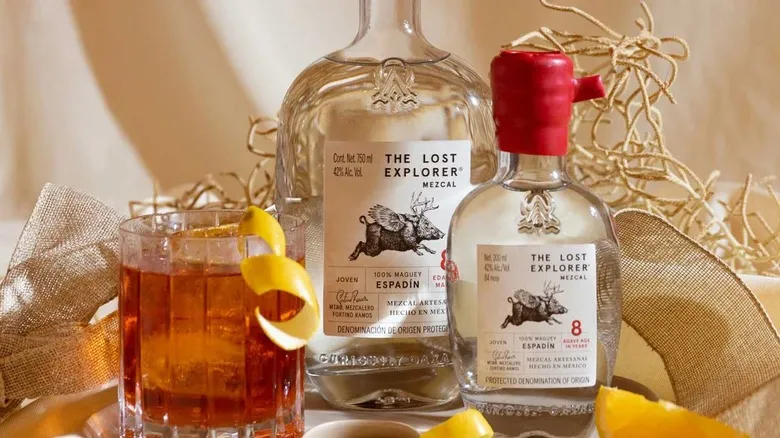
The Lost Explorer focuses on artisanal Mexican spirits, particularly its mezcals, crafted in collaboration with maestro mezcalero Fortino Ramos. They offer three distinct varieties, each boasting its own unique flavor profile and level of smokiness: Espadín, Tobalá, and Salmiana. Vincent Mina features all three expressions at the Tequila Barrel, but he personally prefers the Espadín, believing it to be ideal for both seasoned mezcal enthusiasts and newcomers alike.
The Lost Explorer Espadín is produced using espadín agave sourced from the Valles Centrales region of Oaxaca. The agave is harvested at its peak ripeness, around eight years old. The piñas are then roasted in a fire pit, chopped, and subjected to double distillation. The resulting flavor is fruity, with notes of wood, red apple, and a subtle smokiness. Mina appreciates that the flavors are not as overpowering as those found in some other mezcals. "This one, in particular, is less smoky. It's more gentle and smooth," he remarked. "It's a great value and truly represents the essence of mezcal."
Desolas Mezcal
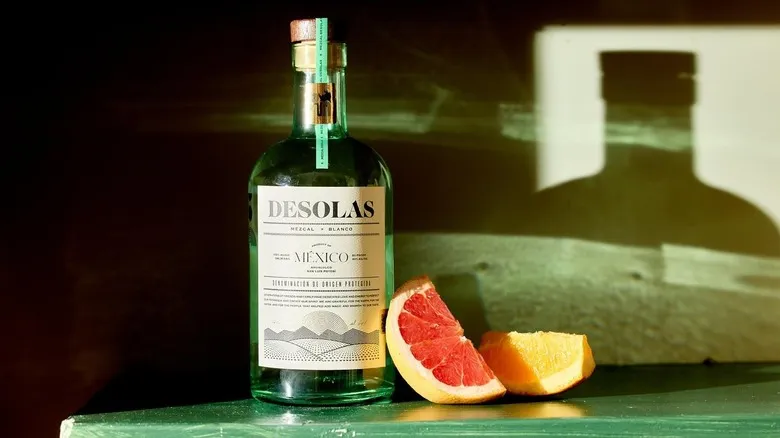
There’s a widespread belief that all mezcals have a smoky flavor. This stems from the fact that most mezcals are produced by roasting agave piñas in underground pits, which transfers the essence of the burning wood to the agave. While we personally enjoy a smoky mezcal, we recognize that it may not appeal to everyone. The good news is that there are several mezcals that aren’t overwhelmingly smoky. One such option is Desolas Mezcal, a distinctive mezcal brand from San Luis Potosí in northeastern Mexico.
Founded in 2020, Desolas is a female-led mezcal company that takes a different approach than many others in the industry. For starters, it utilizes 100% salmiana agave, which can take as long as 25 years to reach full maturity. Additionally, the agave piñas are roasted in an above-ground oven, resulting in only a subtle hint of smoke. GG Mirvis, CEO and co-founder of Desolas Mezcal, shared with Chowhound, "It's perfect for those who are curious about mezcal but believe they don’t like it due to the smoky reputation." Instead of an overpowering smokiness, you’ll experience fresh, complex flavors of ripe agave, citrus, and pepper, culminating in a smooth and well-balanced finish.
Recommended
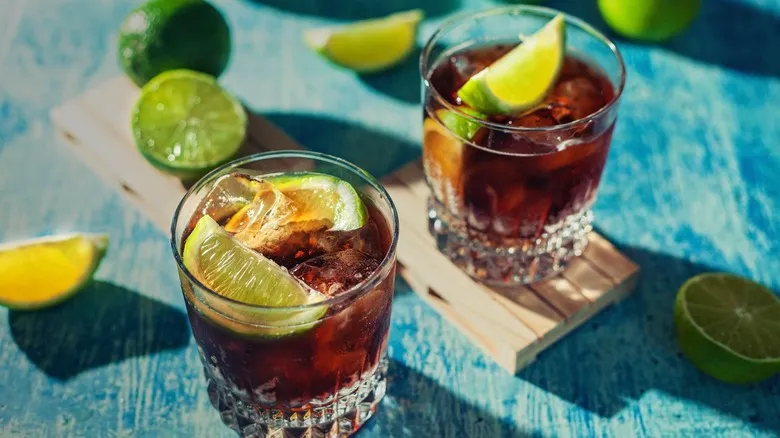
How Many Shots Are In A Mixed Drink?
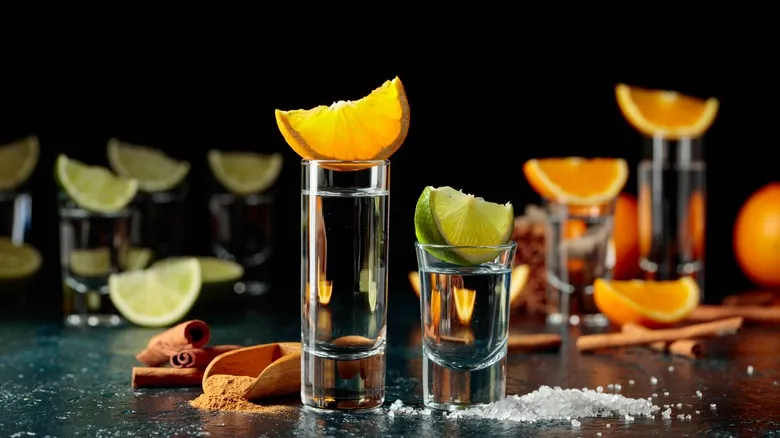
The Sugar Standard That All Tequilas Must Follow

2 Expert-Approved Substitutes For Your Non-Alcoholic Spritz

The Best Substitute For Simple Syrup In Cocktails
Next up

